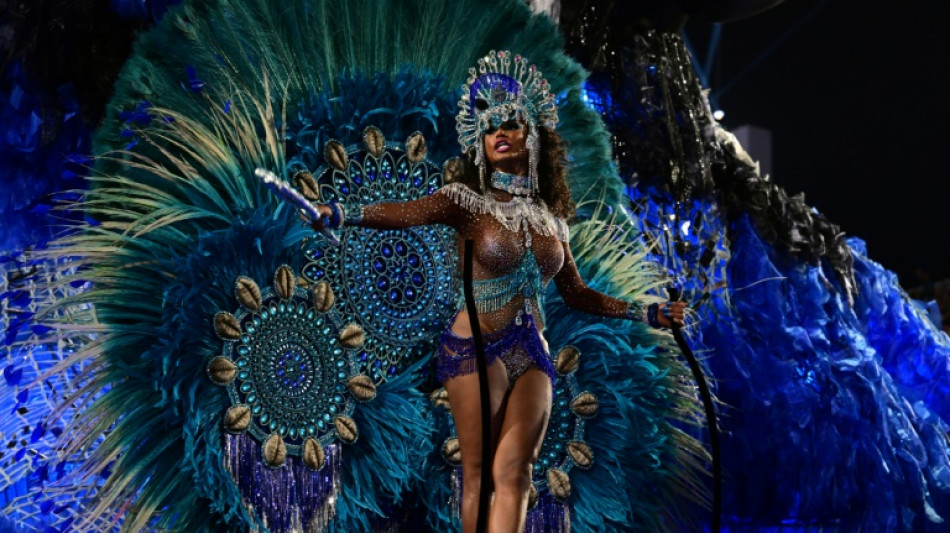
RBGPF
0.8100


In a shimmering riot of colors, thousands of costume-clad, gyrating Brazilians paid tribute to everything from the humble cashew to the fight against slavery in the final parades of Rio de Janeiro's carnival Monday night.
The thundering drumbeats echoed until dawn as the last of 12 samba schools strutted their stuff down the famed Sambodrome avenue for the coveted title of carnival champion, which will only be revealed later this week.
The parade is the main event during weeks of carnival street parties in the beach city, with the Sambodrome seating some 70,000 spectators who come to soak up the elaborate pageantry, towering floats and intricate dance choreography.
The samba schools are rooted in Rio's impoverished favela neighborhoods, and each parade tells a story, often dealing with politics, social issues and history.
One of the highlights was the parade of the Mocidade Independente de Padre Miguel school, which paid homage to the cashew, whose juice is prized in Brazil as much as its nut.
The parade song has become a hit in Brazil in the run-up to the competition.
Striking a different tone, the school Portela -- founded a century ago and which holds the most carnival titles -- paid tribute to the fight of the Brazilian abolitionist Luiz Gama in the 19th century.
"It's a very emblematic subject for black people," Alan Rocha, 43, a black actor and musician, told AFP as he climbed down from the school's float.
Rooted in the culture of samba, the parades this year brought out some of Brazils' biggest names in the genre, such as the singer and composer Martinho da Vila -- who appeared on the float for the Unidos de Vila Isabel school, whose song he composed.
The legendary singer Maria Bethania, 77, surprised many by opening Mangueira's show, dedicated to Alcione, one of the greatest samba singers in Brazil.
Invented a century ago by the descendants of African slaves, samba is one of the great symbols of Brazilian popular culture, and of Rio.
(Y.Berger--BBZ)